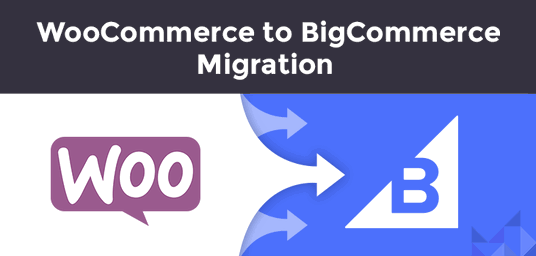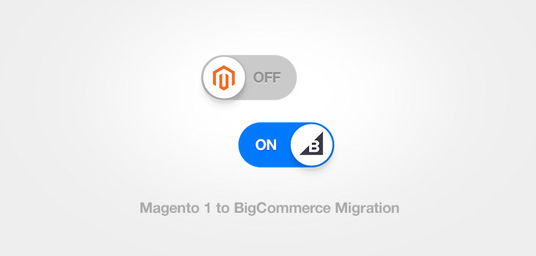eCommerce Replatforming: Migration From WooCommerce to BigCommerce

- What is eCommerce Replatforming?
- The concept of eCommerce Replatforming
- Top reasons that force eCommerce Replatforming
- Fears involved in eCommerce Replatforming
- Decision Process of eCommerce Replatforming
- WooCommerce to BigCommerce migration
- Ease of Use
- What data can be migrated from WooCommerce to BigCommerce?
- Connect with PSDCenter to Migrate Your Online Store from WooCommerce to BigCommerce
eCommerce replatforming is kind of an unexpected process for many online store owners. Most of the times, they had never thought about shifting to another eCommerce platform when they started their online store. But issues like financial, technical, or marketing incapabilities; eCommerce replatforming boils down as the last viable option.
In this article, we are talking about what exactly eCommerce replatforming is and why does it take place. We will also talk about migration from WooCommerce to BigCommerce, and how you can achieve that.
Let’s start.
What is eCommerce Replatforming?
Before understanding the areas of eCommerce replatforming, let’s clearly understand what is eCommerce replatforming.
The concept of eCommerce Replatforming
When an online business faces problems like high platform maintenance cost, lack of platform updates, lack of technology upgrades, store performance issues, etc., it’s more beneficial to shift from the existing eCommerce platform to relatively better platform that can solve the existing problems.
In simple words, when your store faces certain problems, the main reason is your eCommerce platform. At that point in time, shifting to a better eCommerce platform seems the most feasible option. That’s eCommerce replatforming.
Now that we know what exactly eCommerce replatforming is, let’s see some of the major reasons why online stores take this big decision.
Top reasons that force eCommerce Replatforming
Financial Reasons
- High maintenance cost from the platform.
- Availability of the same services with lesser cost.
- Mergers or acquisitions.
Technical Reasons
- Slow store performance.
- No upgrades in features.
- Database and catalog issues.
- Poor customer experience.
- Customization and modification difficulties.
- Limited attributes for products.
- Special requirements that platform fails to offer.
Marketing
- Low CRO.
- No advanced Search Engine Optimization facilities.
- Bad user experience.
Fears involved in eCommerce Replatforming
Of course, eCommerce migration can solve a lot of problems, but there’s are some obvious fears involved. Just like every change in life, online stores feel these kinds of frictions before migrating to another platform. Let’s have a look:
Losing site traffic and losing permanent customer base.
They think it’s a lengthy and time taking process which eventually leads to a huge loss in business.
Loss of resources and other development waste.
The new platform may not be up to the mark and might not fulfill all the requirements.
Facing the same issues with the new platform as well.
The cost involved in the process.
These are some fears that stop many online stores from migration. However, not taking this risk is a huge risk in itself. If you decide not to migrate and make peace with your current problems, eventually you will be a way behind in the heavy competition.
So, change is necessary!
Decision Process of eCommerce Replatforming
Now that we know eCommerce migration can solve a lot of your current problems, let’s have a look at the complete decision process of eCommerce migration. Specifically, how you should select the right platform and other things to keep in mind.
1. Make sure, why do you want to migrate?
Before changing the platform, it is important to decide if you can cut the process of migration or not. Let’s think this way. Ask yourself following questions to land on the decision of eCommerce migration.
- What are the exact problems that you we are facing?
- Can we solve these problems without shifting to another platform?
- What benefits will I get after changing the eCommerce platform?
- Will eCommerce replatforming help us in the competition?
- Will new eCommerce platform be cost-effective?
Many times it happens, that the store owners make emotion-based decisions because they have faced a series of problems. If you can find solutions with your existing platform, you should give another thought to the whole eCommerce migration. But if your platform is the cause of your problems, eCommerce replatforming becomes a must.
Although, rising competition can also be a driving force of replatforming for many eCommerce stores. Even if stores are not facing any major issues, they decide to shift because it would be more beneficial to them in the years to come.
2. Find the right platform that can satisfy your need
Now that you have decided to shift to a new platform, it’s time to find the right platform for your store. There are tons of eCommerce platforms that are available on the market, but you have to invest time to see the advantages & disadvantages of each platform. You can also take advice from eCommerce experts and pick the right platform for your store.
For example: Because of its open-source nature, WooCommerce store faces many security issues. That has lead many WooCommerce store owners to shift to another platform like BigCommerce. BigCommerce offers one of the best services when it comes to security.
Just like that, you have found the right platform that can solve the problems you’re facing. You also have to keep in mind that the new platform doesn’t paralyze your store in some other area.
3. Decide whether you want to revamp the store or not?
Jumping to another platform may also include revamping of the store. This becomes a very important part of eCommerce migration because you can connect the right agency if you want to redesign your store. You can plan to move ahead smartly by merging these two processes.
Although, you can keep your store just the way it is and still change the platform. But, this is a future step you should definitely consider.
WooCommerce to BigCommerce migration
We have come down to the second fold of this article where we will guide the store owners who are looking forward to migrating from WooCommerce to BigCommerce. Here are some reasons why you should migrate from WooCommerce to BigCommerce.
Why migrate from WooCommerce to BigCommerce?
Security
First thing, WooCommerce store face a lot of issues when it comes to security. Here’s a little break down of the hacked websites running on WooCommerce:
- 41% were hacked because of the vulnerability of hosting account.
- 29% of the sites were hacked because of the WordPress theme security issue.
- 8% were hacked because of weak password protection.
- 22% of the sites were hacked because of the WordPress Plugin security issues.
Compared to WooCommerce, BigCommerce offers great security to your online store. BigCommerce stores are offered with multiple layers of security compared to other platforms. Each BigCommerce store is protected by server specific firewalls, file integrity scanners, intrusion detection software, and 24/7 human monitoring. The Enterprise Plan of BigCommerce comes with a DDOS migration to protect your site from external attacks. In terms of hosting, BigCommerce offers Level 1 hosting to the store owners. Here are some key security features that BigCommerce offers to its store owners.
- Unlimited bandwidth.
- Fast content delivery network.
- You can buy unique domain names or use the existing domain name.
- Shared SSL certification is included.
- You can buy SSL certificates from the third party if stores have Pro and Enterprise plans.
In terms of security, BigCommerce clearly beats WooCommerce. Here at PSDCenter, we have seen many examples of platform migration where store owners shift from WooCommerce to BigCommerce just because of the security purposes.
Hosting & Speed
The second difference between WooCommerce and BigCommerce is related to Hosting & Speed. BigCommerce takes care of your hosting, speed, optimization, as the part of a monthly subscription. In the case of WooCommerce, you have to manage yourself when it comes to all these things.
To those, who lack experience in these areas, it becomes really hard to work with WooCommerce, while that’s not the case with BigCommerce.
Development Costs
BigCommerce covers free themes, technical SEO, PPC requirements, and every basic thing that is needed for search engines. If you hire external SEO experts, they just have to focus on advanced marketing. You can take BigCommerce Development from official BigCommerce partners, just like PSDCenter. Basically, in the case of BigCommerce, you’ll know your costing is around monthly subscription.
WooCommerce is open-source, so development costs are all up to you. You have to make custom developments if you need to beautify your themes and that completely depends on the customization.
For BigCommerce, you can have a clear picture when it comes to finding base costing, but that picture is not very clear when we talk about WooCommerce.
Ease of Use
BigCommerce is specifically designed by keeping store owners in mind. BigCommerce knows people who are going to deal with the interface may not carry technical knowledge. That’s why the store administration is very easy to use for everyone. Owners can add new apps and extensions, with a surety that they will work.
In the case of WooCommerce, you must have knowledge of WordPress. Although it offers a wide possibility to create a store of your dream, you need skilled people to manage your store. Some of the features related to blogging will always be there, even if you don’t want.
BigCommerce not only allows you to create an elegant store but also allows you to manage every aspect of it by yourself.
What data can be migrated from WooCommerce to BigCommerce?
Here’s a table that shows what exactly can be migrated from WooCommerce to BigCommerce:
| Products |
|
| Categories | Product category name, description, status Category images URLs, meta tags |
| Manufacturers |
|
| Customer details |
|
| Order Details |
|
| Coupons |
|
| Customer reviews |
|
| Blog posts |
|
As you can see, you can migrate a majority of details if you decide to shift from WooCommerce to BigCommerce. Apart from these data, you have below options in the eCommerce migration process.
- Clear out recent data on target shop.
- Create a redirect 301 option to your new store.
- Product SEO details.
- Strip HTML from product pages, category pages, and descriptions.
Connect with PSDCenter to Migrate Your Online Store from WooCommerce to BigCommerce
PSDCenter is a certified BigCommerce partner for more than 10 years. Connect with PSDCenter to safely migrating from WooCommerce to BigCommerce. Talking about PSDCenter, it is a Charlotte-based eCommerce development company dedicatedly working on BigCommerce, Shopify, 3DCart, Lightspeed, etc. Connect with PSDCenter for eCommerce themes for your business. Don’t miss to check out our BigCommerce themes store.
Cheers!
| Check out BigCommerce Themes | Contact Us |
Tags: ecommerce migration|ecommerce replatforming|migration from woocommerce to bigcommerce|woocommerce to bigcommerce
Written byPublished August 03, 2018

Anisha Bhandari


